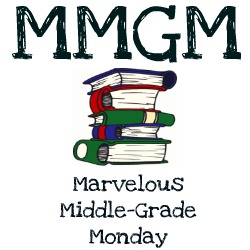What does Palace of Stone have to do with Thanksgiving week? Well…I’m tempted to say absolutely nothing, but here are a couple things that come to mind, right off the top of my head:
- Gratitude that our presidents have limited terms, and that no matter how awful the choice in whomever gets voted in (notice how careful I’m being to try and stay neutral?) we do not have to put up with said person for a lifetime, and do not have to resort to violence to bring about change.
- Gratitude that most of us enjoy incredible degrees of personal freedom, safety, and comfort, even when things are lean and difficult, when compared to much of human history.
- Gratitude that we have books, books, and more books than we can ever read at our finger tips and available for us to read. They give us transport to other times and places, and provide an excellent release for our day to day stresses. Besides, they’re fun!
So, there you go. Princess Academy: Palace of Stone is stepping into the spotlight this week, and not the least concerned about its lack of turkeys or an autumn theme!
*WARNING: there be spoilers below*
Putting what I feel is a fair spotlight on this book is a little trickier. But, let me first talk about what it’s about and what I loved. In this second book, or sequel, to Shannon Hale’s first Princess Academy, we see Miri navigating the ins and outs of bustling life in the city, far from the comfort and familiarity of her life on Mount Eskel. And the city isn’t exactly a peaceful place. Early in the book, when she arrives, she witnesses a man make an assassination attempt on the king, resulting in the would-be assassin being shot. That establishes the pulse of the city, wherein the people are poor and angry with their king for the tax burden he’s placed on them. They are desperate, and some among them are ready for revolution. They see in Miri a girl of the people, who is accustomed to poverty and able to bring about change, as she did in helping the village of Mount Eskel get a fair price for their linder.
Unfortunately, this puts Miri in a bad position. She just wants to help Britta and Prince Stefan prepare for their wedding (and work through whatever has gone wrong in their relationship) while learning all she can as a student in the prestigious Queen’s Castle school. But she feels deep sympathy for the poor of the city and for the people’s revolutionary desires for change. Soon, without her really intending it, she’s deeply embroiled in schemes on both sides, and headed toward serious danger. In and around and in the middle of all this, Miri stretches and grows into broader and more complex views of the world. She comes to understand that the problems of the kingdom are much bigger than she ever could have imagined on Mount Eskel. She navigates some tricky relationship ins and outs, and learns to look her enemies in the face and (most of them) find there a person she can respect and have empathy for. She also has to closely examine her own heart, and the person she’s becoming, and figure out what it is she really wants and who she wants to be.
In other words, she grows up. Some people complain that she’s less active in this book than in the first–and that’s true. She does appear less the solution and struggles more to find the answer. But that’s often the case when a person grows from the early teen years–with energy and often all the answers–through the challenging time as an older teen when you discover that despite your hard work, good intentions, and proactive resourcefulness, the problems of the world have not gone away. Moreover, sometimes you can’t save a friendship, and you can’t win over every enemy. These are painful truths that older teens face and adults know well, but often preteens and younger teens are spared. So, I felt the book accurately reflected Miri’s older mindset and maturity, down to and including her challenges in finding ready-made solutions. She’s still a strong character with a big heart and a determination to overcome no matter what, and she’s still a daughter of Mount Eskel, with a connection to the stone of the mountain’s mysterious magic. She’s still Miri, in other words, and this is still a Princess Academy story.
That said…to fans of the first book, it may be a disappointment. Especially the younger fans, who’ve just finished the first book. A beloved (one could say classic), Newbery Honor book is a tough act to follow, and in many ways, this sequel falls flat. In growing Miri up in the ways she does, we lose much of her innocence and freshness. In broadening the scope of the story’s stage, many new characters are brought in and we see very little of the original band from the Princess Academy. Katar, Esa, Frid, Gerti, they all get sidelined. We see so little of Peder that he seems more a representation of the mountain and Miri’s love for it than an actual character. Even Britta gets very little page time, despite the book supposedly being about Miri helping her, and most of the conflict centering on her role as the new princess. From a writer and editorial stand point, I can see what Shannon Hale did and why, and appreciate the wisdom of her choices. From a readers perspective, I could only sigh. At the end of the day, the story simply does not feel like a sequel to the first, and would get better reviews and leave behind a happier readership if it were completely divorced from the first and meant to be a read as a stand alone. It simply doesn’t feel connected to Princess Academy in any way that speaks to the soul.
But, there. Enough from me. I feel for authors who receive pressure from fans (for years!) to write a sequel to a beloved book. The odds of anyone being truly happy with the result if the author caves and writes it are slim to none. So, let’s get the wisdom of a cat and see what Apricot-kitty has to say:
 “Haven’t I told you all to stop this before? That’s right, you remember when I said you shouldn’t let yesterday’s mouse spoil today’s mole. And what is it I hear you doing? Complaining about a perfectly delicious book because it’s not the same as the first. Just stop.”
“Haven’t I told you all to stop this before? That’s right, you remember when I said you shouldn’t let yesterday’s mouse spoil today’s mole. And what is it I hear you doing? Complaining about a perfectly delicious book because it’s not the same as the first. Just stop.”
And there you have the crux of the problem, of course! We love the first too much to love the second as it stands…and can’t quite help ourselves. That said, the political world building in this sequel was truly amazing! Just as the first book taught unsuspecting readers superb negotiating skills, this book teaches them more about political science and the art of government than they ever thought they’d retain. It may not satisfy the same craving as the first, but it’s a good book, and one I’ll still recommend.
For more Marvelous Middle Grade Monday spotlights, reviews, interviews and giveaways, stop by Shannon Messenger’s blog! If you live in the US or celebrate our holidays, have a scrumptious and joy-filled Thanksgiving, and to all of you–happy reading!


Greg Pattridge
Suzanne
Sheri Larsen
Suzanne
joanne Roberts
Suzanne
Patricia Tilton
Suzanne
Kim Aippersbach
Suzanne